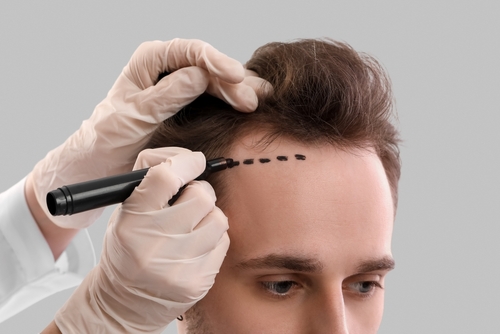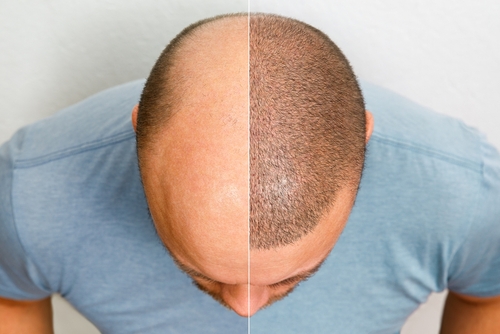For individuals grappling with hair loss, whether due to genetics, aging, or medical conditions, the prospect of a receding hairline or thinning scalp can significantly impact self-esteem and confidence. Fortunately, advances in medical technology have paved the way for hair transplants, offering a ray of hope and a chance to regain a fuller head of hair. In this article, we’ll delve into the transformative journey of hair transplants and their profound impact on individuals’ lives.
Understanding Hair Transplants
Hair transplantation is a surgical procedure designed to address hair loss by redistributing healthy hair follicles from donor areas to balding or thinning regions of the scalp. By transplanting follicular units containing multiple hair follicles, surgeons can restore hair density and coverage in areas affected by hair loss.

Advancements in Techniques
Over time, hair transplant techniques have evolved, leading to more natural-looking results and shorter recovery periods. The two primary methods include Follicular Unit Transplantation (FUT), which involves harvesting a strip of scalp from donor areas, and Follicular Unit Extraction (FUE), which extracts individual follicular units directly from the scalp.
Transformative Results
Beyond cosmetic improvements, hair transplants can have a profound impact on individuals’ self-esteem and quality of life. Restoring a full head of hair can instill confidence, improve social interactions, and alleviate the emotional burden associated with hair loss. Many recipients report feeling rejuvenated and more comfortable in their own skin following a successful hair transplant.
Considerations and Expectations
While hair transplants offer promising results, it’s essential for individuals to have realistic expectations and understand the procedure’s limitations. Factors such as the extent of hair loss, donor hair quality, and individual healing capabilities can influence the outcome. Consulting with a qualified surgeon is crucial for assessing candidacy, discussing treatment options, and setting achievable goals.

Customized Treatment Plans
Hair transplant procedures are meticulously customized to suit each individual’s specific needs and desires. Surgeons meticulously evaluate factors such as the pattern of hair loss, hair characteristics, and aesthetic preferences to craft personalized treatment strategies. By tailoring the approach to address the unique circumstances of each patient, surgeons can optimize outcomes and satisfaction levels. This personalized approach ensures that individuals receive the most suitable treatment plan, tailored to their distinct circumstances, ultimately leading to enhanced results and heightened satisfaction with their hair transplant experience.
Non-Surgical Alternatives
Apart from surgical hair transplants, individuals coping with hair loss have the option to explore non-surgical alternatives. These include medications like minoxidil and finasteride, low-level laser therapy (LLLT), or platelet-rich plasma (PRP) treatments. These alternatives can either complement surgical intervention or serve as standalone treatments, contingent on the severity and root cause of hair loss. Non-surgical options offer a less invasive approach, providing flexibility for individuals who may prefer to explore conservative options before considering surgical procedures. Consulting with a healthcare professional can help determine the most suitable treatment approach based on individual circumstances and treatment goals.
Gradual and Natural-looking Results
Hair transplants produce gradual and natural-looking outcomes, involving the initial shedding of newly transplanted hair follicles before the regrowth of permanent hair. Patients should be aware of the timeline of hair growth and maintain patience as they await the complete results of the procedure. Understanding that the process involves a transition period is crucial, as visible improvements may take several months to become apparent. By managing expectations and remaining patient, individuals can better appreciate the transformative potential of hair transplants and ultimately achieve the desired outcome of a fuller and more natural-looking head of hair.

Post-Transplant Care and Maintenance
After undergoing a hair transplant, meticulous post-operative care and maintenance are crucial for achieving optimal results. Patients may receive guidance to refrain from certain activities such as strenuous exercise or swimming during the initial recovery period. Additionally, adhering to a prescribed hair care regimen is essential to promote healing and ensure the long-term viability of transplanted hair follicles. This may involve gentle cleansing techniques, avoiding excessive manipulation or styling, and using specialized products recommended by the surgeon. By following post-operative instructions diligently, patients can enhance the success of their hair transplant procedure and maximize the longevity of their results.
Potential Risks and Complications
Hair transplants, while generally safe, entail potential risks and complications, akin to any surgical procedure. These can include infection, scarring, uneven hair growth, or shock loss—temporary shedding of existing hair. Patients must be fully informed about these risks and engage in thorough discussions with their surgeon before committing to treatment. Understanding the potential drawbacks enables patients to make informed decisions, weigh the risks against the benefits, and prepare for any eventualities. Surgeons play a crucial role in educating patients about these risks, ensuring transparency, and addressing any concerns to facilitate a well-informed and confident decision-making process.
Long-term Satisfaction and Follow-up
Achieving long-term satisfaction with hair transplant results necessitates ongoing follow-up and maintenance. Regular evaluations with the surgeon enable monitoring of hair growth progress, identification of any changes, and addressing of emerging concerns or additional treatment needs. These periodic check-ins provide an opportunity to assess the effectiveness of the transplant, make any necessary adjustments, and ensure continued satisfaction with the outcome. By maintaining open communication and scheduling routine follow-up appointments, patients can receive comprehensive support and guidance throughout their hair restoration journey, ensuring lasting success and confidence in their appearance.

Conclusion
Hair transplants represent a significant breakthrough in cosmetic surgery, offering a life-changing solution for individuals struggling with hair loss. With advancements in techniques and technologies, hair transplants have become safer, more effective, and more accessible. Whether seeking to regain a youthful appearance, boost confidence, or simply feel more comfortable, hair transplant recipients can embark on a journey towards renewed self-assurance and a fuller head of hair.

